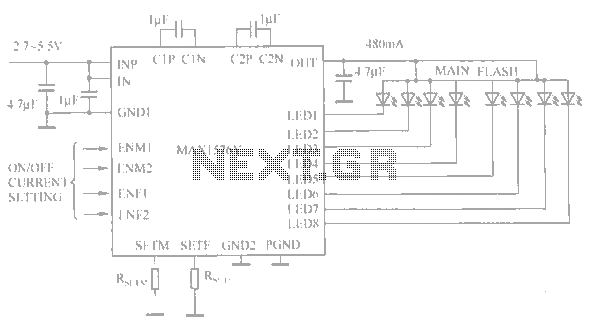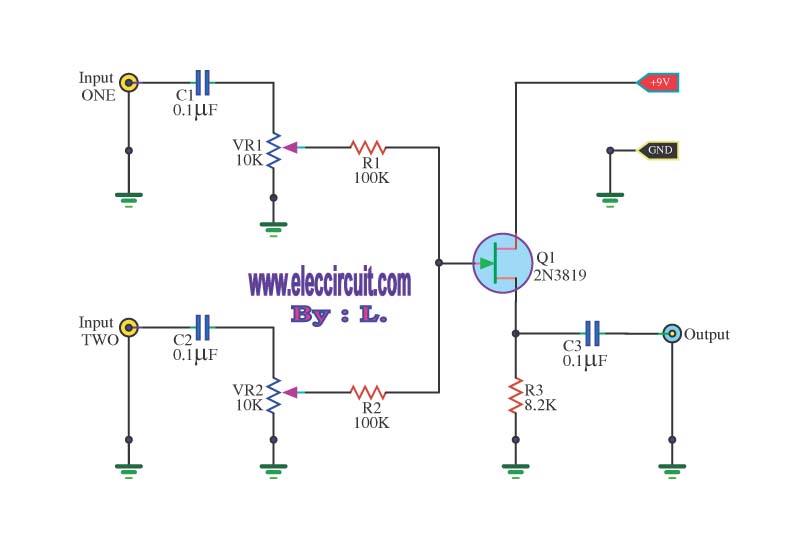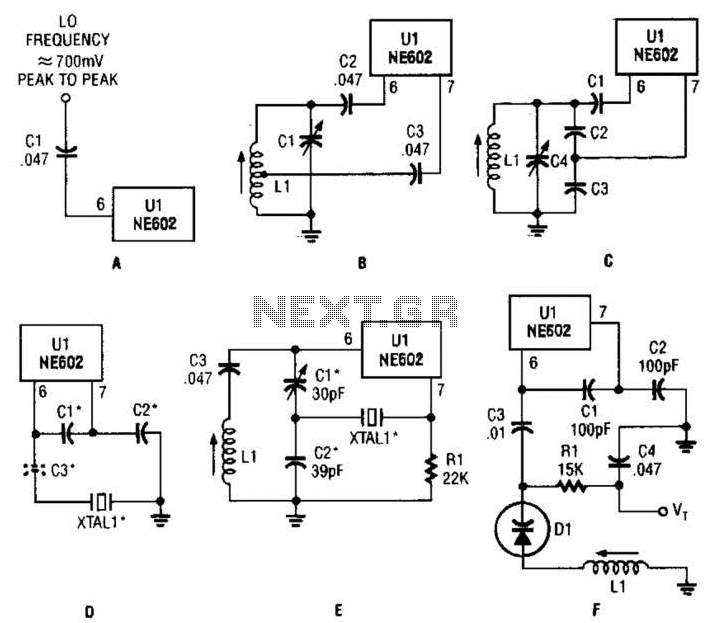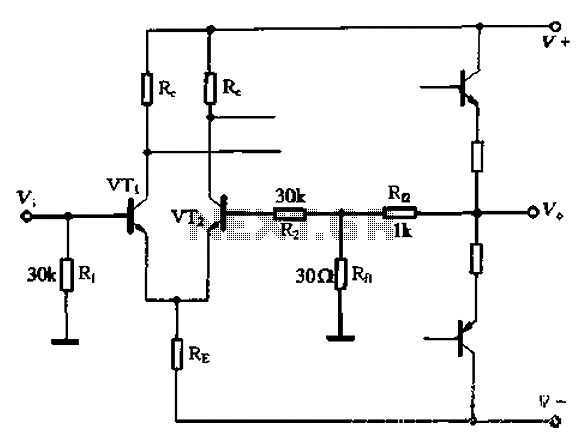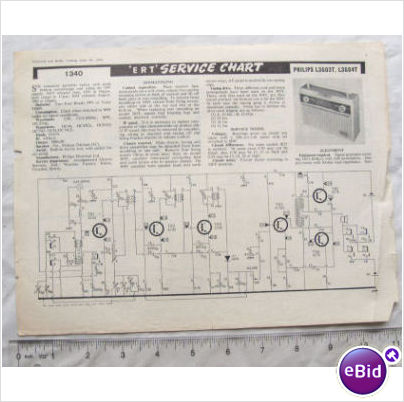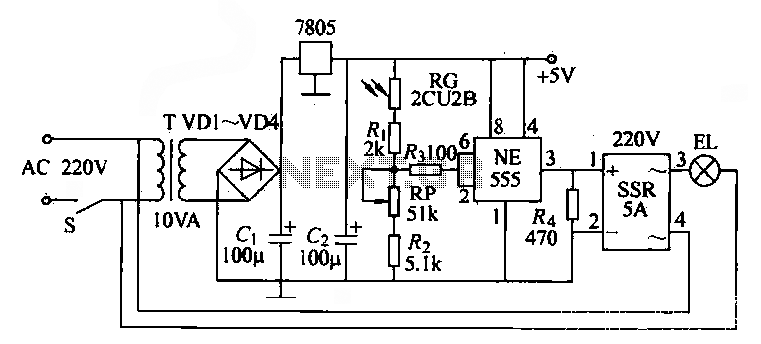
1.8kHz signal generator circuit
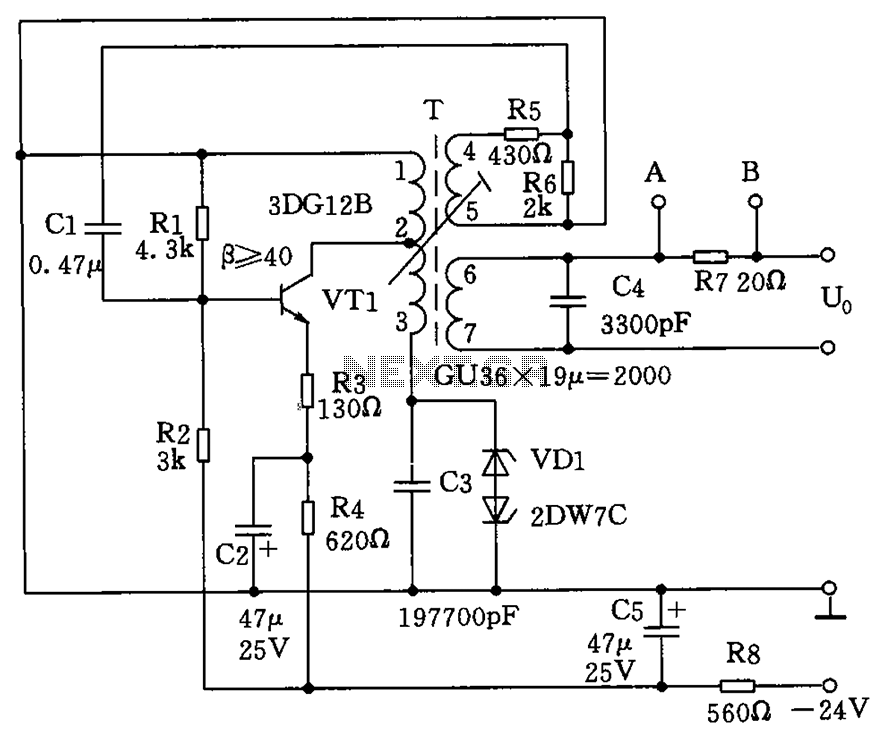
The circuit depicted in the figure allows for the selection of optimal operating conditions and a suitable allocation of the temperature coefficient for the resonant circuit components. The resonance occurs at both ends of the circuit. Additionally, the exchange regulator has implemented measures to achieve excellent output amplitude and frequency stability. At a temperature of +25°C, even with power supply voltage variations of up to -40% from -24V, the frequency is maintained at 2Hz, and the output level is recorded at 0.26 dB.
The described circuit emphasizes the importance of selecting optimal working conditions for resonant circuits, particularly in applications where temperature fluctuations and voltage variations can significantly impact performance. The resonant circuit components must be carefully chosen to ensure that their temperature coefficients are aligned with the expected operational environment. This alignment is crucial for maintaining resonance, which is the condition where the circuit operates efficiently at a particular frequency.
The implementation of an exchange regulator within the circuit serves to stabilize both the output amplitude and frequency. This regulator is designed to compensate for variations in the power supply voltage, which can otherwise lead to deviations in circuit performance. The ability to maintain a stable output level of 0.26 dB, even under conditions where the supply voltage can drop to -40% of its nominal value, indicates a robust design that prioritizes reliability.
Operating at a frequency of 2Hz signifies that the circuit is likely intended for low-frequency applications, which may include sensor interfaces, audio processing, or other signal conditioning tasks. The choice of a resonant circuit configuration also suggests that the design aims to maximize energy transfer and minimize losses, which is essential for enhancing the efficiency of the overall system.
In summary, the circuit design reflects a careful consideration of temperature stability, voltage regulation, and frequency maintenance, ensuring that it can perform reliably across a range of environmental conditions. Such features are critical for applications where precision and stability are paramount. Circuit shown in Figure select the best working conditions and a reasonable allocation of the temperature coefficient of resonant circuit components. Both ends of the resonance exchange regulator also adopted measures to obtain excellent output amplitude and frequency stability. Temperature + 25 20. Even if the power supply voltage variations within the range of -40% change in -24V, frequency f 2Hz, output level dB 0.26dB.
The described circuit emphasizes the importance of selecting optimal working conditions for resonant circuits, particularly in applications where temperature fluctuations and voltage variations can significantly impact performance. The resonant circuit components must be carefully chosen to ensure that their temperature coefficients are aligned with the expected operational environment. This alignment is crucial for maintaining resonance, which is the condition where the circuit operates efficiently at a particular frequency.
The implementation of an exchange regulator within the circuit serves to stabilize both the output amplitude and frequency. This regulator is designed to compensate for variations in the power supply voltage, which can otherwise lead to deviations in circuit performance. The ability to maintain a stable output level of 0.26 dB, even under conditions where the supply voltage can drop to -40% of its nominal value, indicates a robust design that prioritizes reliability.
Operating at a frequency of 2Hz signifies that the circuit is likely intended for low-frequency applications, which may include sensor interfaces, audio processing, or other signal conditioning tasks. The choice of a resonant circuit configuration also suggests that the design aims to maximize energy transfer and minimize losses, which is essential for enhancing the efficiency of the overall system.
In summary, the circuit design reflects a careful consideration of temperature stability, voltage regulation, and frequency maintenance, ensuring that it can perform reliably across a range of environmental conditions. Such features are critical for applications where precision and stability are paramount. Circuit shown in Figure select the best working conditions and a reasonable allocation of the temperature coefficient of resonant circuit components. Both ends of the resonance exchange regulator also adopted measures to obtain excellent output amplitude and frequency stability. Temperature + 25 20. Even if the power supply voltage variations within the range of -40% change in -24V, frequency f 2Hz, output level dB 0.26dB.
